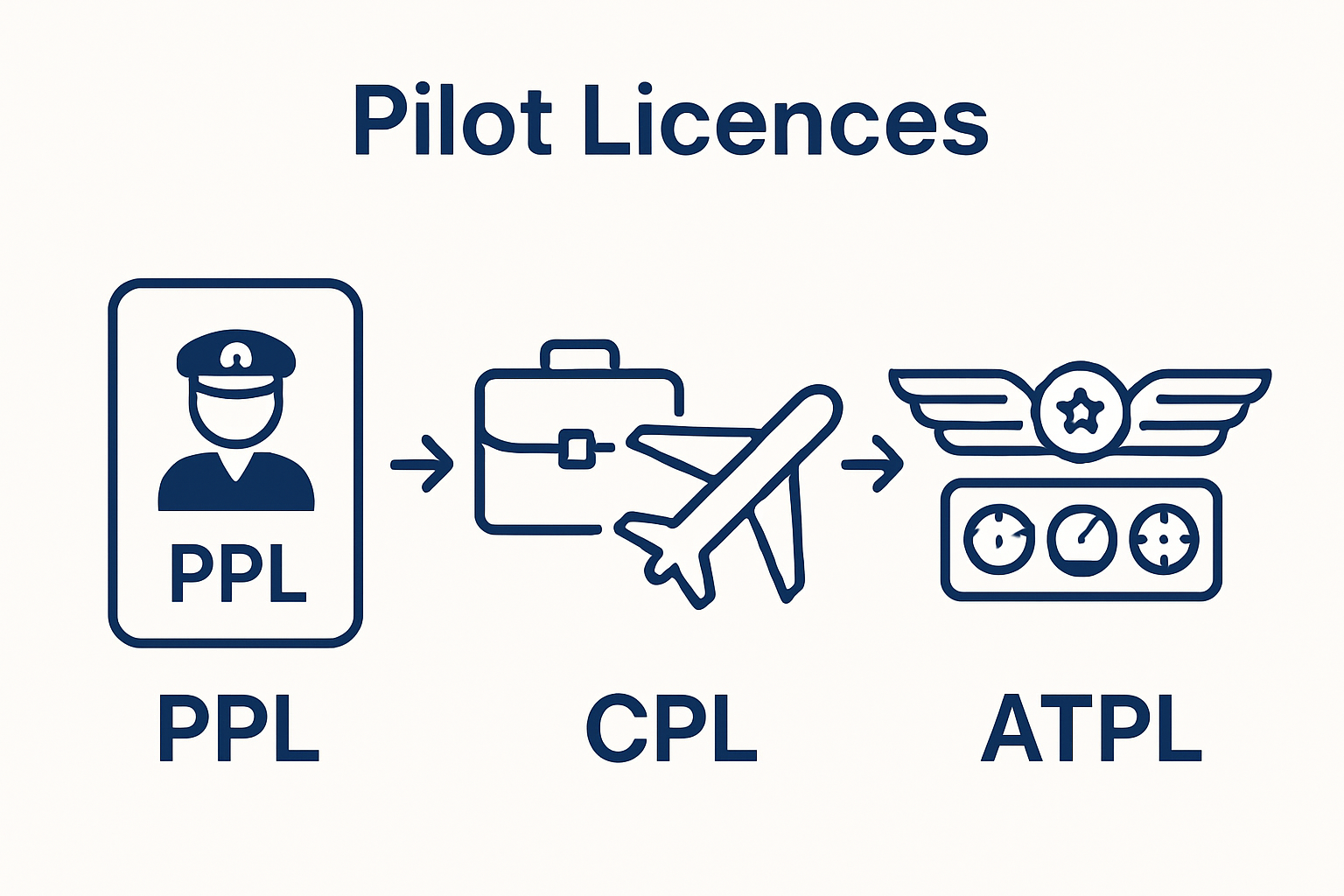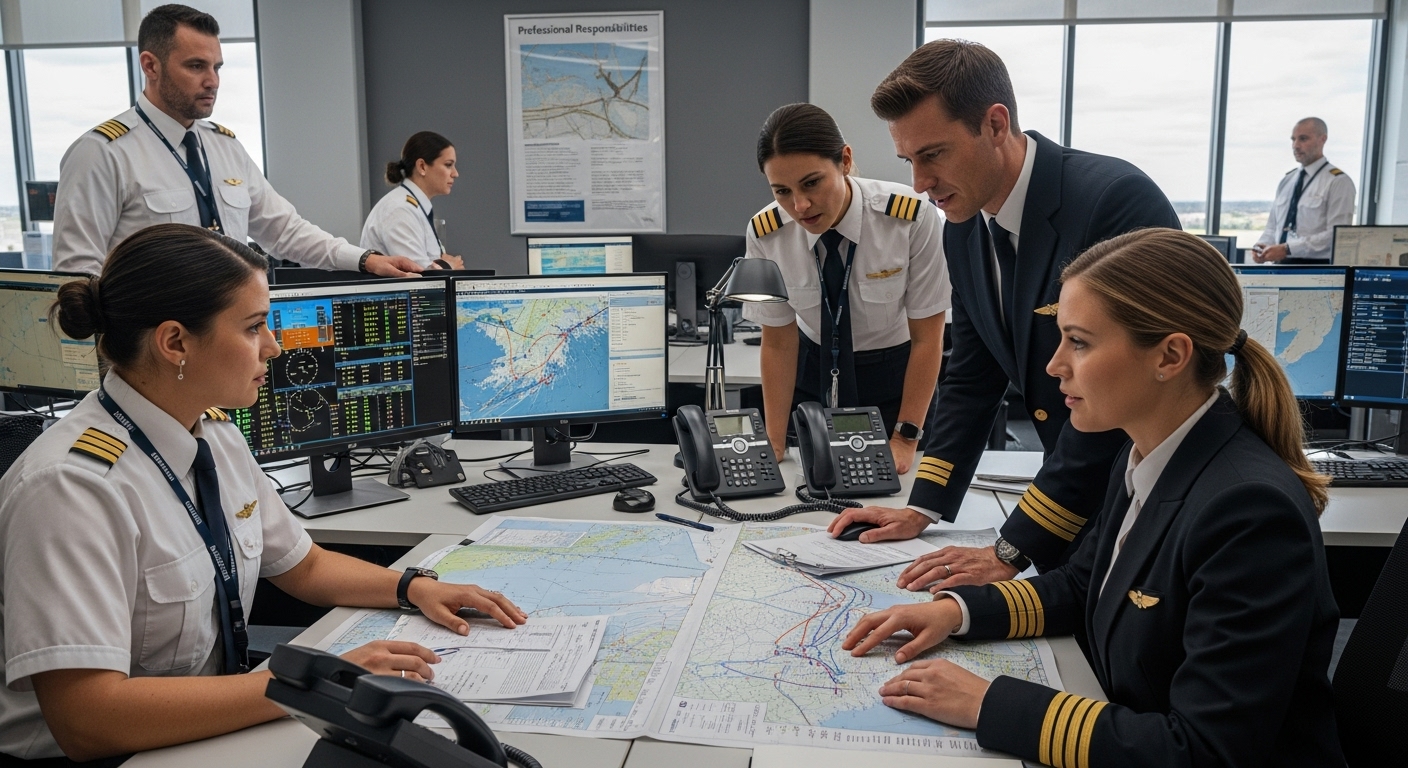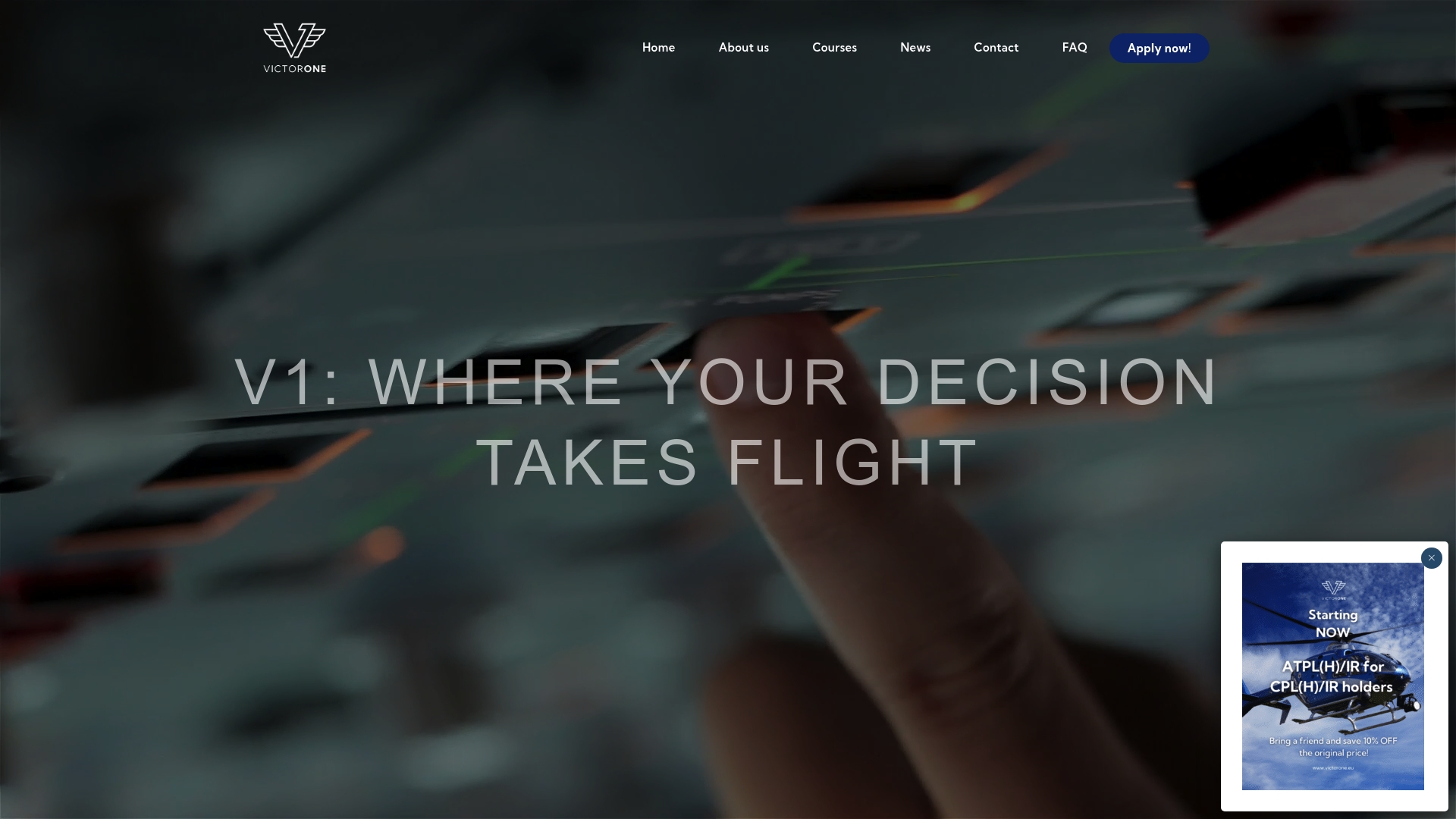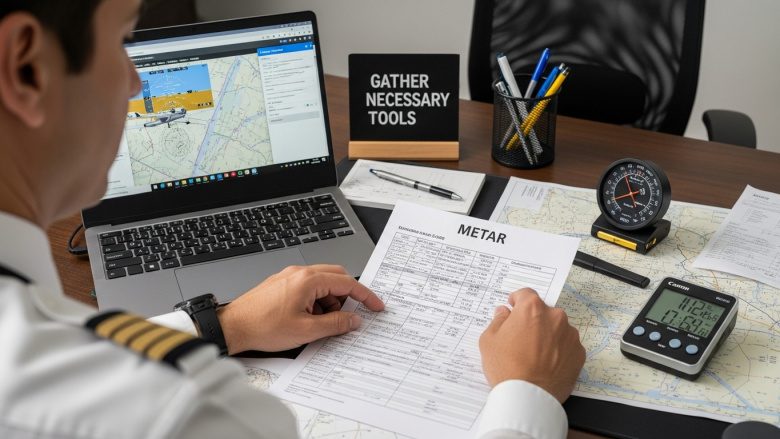Aviation career pathways shape the future for thousands who dream of turning a love for flying into a real profession. You might think the journey means just clocking hours in a cockpit and collecting a licence or two. Yet the aviation world offers far more choice and structure, with professional pilots needing up to three major licences and multiple technical ratings on their way from student to captain. The hidden reality is that each step unlocks fresh opportunities, letting pilots tailor their journey far beyond what most expect.
Table of Contents
- What Are Aviation Career Pathways?
- The Importance Of Choosing The Right Pathway
- Key Roles And Responsibilities In Aviation Careers
- Educational And Training Requirements For Aviation
- Real-World Applications Of Aviation Career Pathways
Quick Summary
| Takeaway | Explanation |
|---|---|
| Understand your career pathway options | Explore structured routes from training to becoming a certified pilot, including specialisations available in aviation. |
| Select the right training pathway | Choose a pathway that aligns with your career goals, financial situation, and personal learning style for optimal success. |
| Core pilot responsibilities are extensive | Recognise that pilots manage safety, technical operations, and emergency procedures, requiring continuous skill development. |
| Education is critical for a successful career | Complete rigorous training and pass exams to earn necessary licences and ensure preparedness for aviation responsibilities. |
| Career specialisation enhances job prospects | Pursuing specific aviation domains increases employability and allows for diversified professional development opportunities. |
What are Aviation Career Pathways?
Aviation career pathways represent the structured professional development routes aspiring pilots can pursue to transform their passion for flying into a sustainable, rewarding career. These pathways are comprehensive frameworks that guide individuals from initial training through advanced professional qualifications, mapping out the strategic progression required to become a commercial pilot.
Understanding the Career Progression Framework
The aviation career pathway is not a single linear route but a complex network of training stages, certifications, and specialisations. At its core, these pathways are designed to systematically build a pilot’s skills, knowledge, and professional credentials.
 European Aviation Safety Agency (EASA) regulations provide the foundational structure for these career progressions, ensuring standardised training and safety protocols across different aviation sectors.
European Aviation Safety Agency (EASA) regulations provide the foundational structure for these career progressions, ensuring standardised training and safety protocols across different aviation sectors.
Key components of aviation career pathways typically include:
- Private Pilot Licence (PPL): The fundamental starting point for aspiring pilots
- Commercial Pilot Licence (CPL): Professional qualification enabling commercial flying opportunities
- Airline Transport Pilot Licence (ATPL): The highest level of aircraft pilot certification
- Additional technical ratings for specific aircraft types and operational conditions
Diverse Professional Opportunities
Pilot career pathways offer remarkable flexibility, allowing professionals to specialise in multiple aviation domains. These include commercial passenger airlines, cargo transportation, corporate aviation, flight instruction, agricultural aviation, and emergency medical services. Each specialisation requires specific training modules and additional certifications beyond the standard pilot licences.
To help aspiring pilots compare each major licence and certification in the aviation career pathway, the following table outlines their core characteristics, required progression, and primary career applications.
| Licence/Certification | Purpose | Typical Requirements | Primary Career Outcomes |
|---|---|---|---|
| Private Pilot Licence (PPL) | Enables basic, non-commercial piloting | Theoretical & basic flight training | Recreational flying, entry to further training |
| Commercial Pilot Licence (CPL) | Allows pilots to be paid for flight duties | PPL, advanced flight hours & theory | Commercial airline, cargo, or charter pilot |
| Airline Transport Pilot Licence (ATPL) | Highest professional pilot qualification | CPL, extensive theory, flight experience | Captain roles, airline commander |
| Additional Technical Ratings | Specialise for specific aircraft or operations | Licence-holder status, extra type training | Specialist roles (e.g., jets, helicopters) |
Understanding these pathways helps aspiring pilots make informed decisions about their training investments, career strategies, and long-term professional development. By comprehensively mapping out the progression from initial training to advanced professional roles, aviation career pathways transform the complex journey of becoming a pilot into a structured, achievable goal.
The Importance of Choosing the Right Pathway
Selecting the appropriate aviation career pathway is a critical decision that significantly influences an aspiring pilot’s professional trajectory, financial investment, and long-term career prospects. The right pathway not only determines the speed and efficiency of obtaining pilot certifications but also shapes the potential opportunities available in the competitive aviation industry.
Strategic Training Selection
The choice of training pathway directly impacts a pilot’s employability and career progression. Different pathways offer varying levels of theoretical knowledge, practical experience, and professional networking opportunities. European Aviation Safety Agency (EASA) emphasises the importance of selecting a training route that aligns with individual career goals and industry requirements.
Key considerations when selecting a pilot training pathway include:
- Total training cost and financial investment required
- Duration of training programme
- Flexibility of learning modules
- Quality and reputation of training organisation
- Potential job placement opportunities
- Compatibility with personal learning style and professional objectives
Long-Term Career Implications
A well-chosen pathway provides more than just technical qualifications. It establishes a foundation for professional growth, networking, and specialisation opportunities. Pilots who strategically select their initial training pathway are better positioned to adapt to changing industry dynamics, explore diverse aviation sectors, and build a robust professional portfolio.
Ultimately, the right aviation career pathway transforms technical training into a comprehensive professional development strategy. By carefully evaluating personal goals, financial capabilities, and industry trends, aspiring pilots can design a training route that maximises their potential and creates a solid platform for a successful aviation career.
Key Roles and Responsibilities in Aviation Careers
Aviation careers encompass a complex ecosystem of professional responsibilities that extend far beyond simply operating an aircraft. Pilots are entrusted with significant professional obligations that require technical expertise, strategic decision-making, and an unwavering commitment to safety and passenger welfare.
Professional Core Responsibilities
Pilots serve as the primary operational leaders in aviation environments, carrying comprehensive responsibilities that demand exceptional skill and continuous professional development. European Aviation Safety Agency (EASA) defines these responsibilities as a multifaceted set of technical, operational, and human factors management tasks.
Core professional responsibilities include:
- Conducting comprehensive pre-flight aircraft inspections
- Ensuring precise navigation and communication protocols
- Managing flight systems and responding to potential technical challenges
- Maintaining accurate flight documentation and operational logs
- Implementing emergency response procedures when required
Safety and Operational Management
Beyond technical flying skills, pilots are responsible for holistic safety management. This involves continuous risk assessment, crew coordination, passenger protection, and adherence to strict international aviation regulations. Professional pilots must demonstrate exceptional situational awareness, quick decision-making capabilities, and the ability to manage complex operational scenarios under potentially high-stress conditions.
Successful aviation professionals understand that their role extends beyond technical proficiency. They are ultimately responsible for the safe transportation of passengers, effective resource management, and representing the highest standards of professional conduct in an increasingly complex global transportation environment.

Educational and Training Requirements for Aviation
Pursuing an aviation career demands a rigorous and structured educational pathway that combines theoretical knowledge, practical skills, and stringent regulatory compliance. The training requirements are meticulously designed to ensure pilots possess the comprehensive expertise necessary for safe and professional aircraft operations.
Theoretical Knowledge Foundation
The educational journey for aspiring pilots begins with an extensive theoretical curriculum covering multiple critical domains.
European Aviation Safety Agency (EASA) mandates comprehensive theoretical training that encompasses complex subjects essential for professional aviation competence.
Key theoretical knowledge areas include:
- Air navigation and flight planning
- Aircraft technical systems and performance
- Meteorological principles and interpretation
- Aviation regulations and international legal frameworks
- Human performance and operational decision-making
- Radio communication protocols
Professional Training and Certification Stages
Aviation training follows a structured progression of licences and ratings, each representing increasing levels of professional complexity and operational responsibility. The standard pathway typically involves obtaining progressively advanced certifications, starting from a Private Pilot Licence (PPL) and advancing through Commercial Pilot Licence (CPL) to the pinnacle Airline Transport Pilot Licence (ATPL).
Each certification stage requires demonstrating profound theoretical understanding, accumulating specific flight hours, passing comprehensive practical and written examinations, and maintaining medical fitness standards. The educational requirements are deliberately challenging, ensuring only the most dedicated and capable individuals progress through the professional aviation ranks.
Real-World Applications of Aviation Career Pathways
Aviation career pathways translate theoretical knowledge and training into dynamic professional opportunities across multiple sectors. These pathways represent more than academic qualifications, serving as practical bridges between education and real-world operational environments where pilots transform their skills into meaningful professional contributions.
Diverse Aviation Sector Opportunities
Professional pilots can leverage their training and certifications across numerous specialized aviation domains. European Aviation Safety Agency (EASA) recognises multiple professional contexts where trained pilots can apply their expertise and build sustainable careers.
Key real-world aviation career applications include:
- Commercial passenger airline operations
- Cargo and freight transportation services
- Corporate and private jet management
- Emergency medical transportation
- Agricultural aviation and crop management
- Search and rescue operations
- Flight instruction and training
- Aerial surveying and environmental monitoring
Professional Progression and Specialisation
Successful aviation professionals understand that career pathways are dynamic frameworks enabling continuous skill development and specialisation. Each professional role requires specific additional ratings, technical understanding, and operational experience beyond basic pilot certifications.
The following table summarises the main aviation sectors where professional pilots can apply their qualifications and highlights the type of work involved in each sector.
| Aviation Sector | Typical Pilot Role | Work Environment/Context |
|---|---|---|
| Commercial Airlines | Passenger Aircraft Pilot | Scheduled passenger flights on fixed routes |
| Cargo and Freight Transportation | Cargo Pilot | Regional and international freight flights |
| Corporate and Private Aviation | Business Jet/Private Pilot | Private charters, executive travel |
| Emergency Medical Services | Air Ambulance Pilot | Medical evacuation, critical care flights |
| Agricultural Aviation | Agricultural Pilot | Crop dusting, aerial agricultural operations |
| Flight Instruction | Flight Instructor | Training new pilots, flight schools |
| Search and Rescue/Aerial Survey | Special Operations Pilot | Rescue, law enforcement, surveying missions |
Ultimately, real-world aviation career applications transform technical training into meaningful professional journeys, offering pilots opportunities to contribute significantly to global transportation, emergency services, economic infrastructure, and technological innovation.
Take the Next Step on Your Aviation Career Pathway with VictorOne
Navigating the structured journey of aviation career pathways can be overwhelming. Many aspiring pilots feel uncertain about which training route will set them up for a lasting and dynamic career in commercial flying. The article highlighted the importance of aligning your training framework with professional goals, EASA standards and future opportunities. If you have ever wondered how to secure the right qualifications, overcome the complexities of EASA licensing or find a flexible way to balance learning with your life, you are not alone. VictorOne understands the pressures of time, cost and confidence in choosing the right pathway for your success.

VictorOne makes it possible to achieve your goals, no matter where you start or which direction you wish to pursue. With fully online, EASA-approved theoretical courses for ATPL(A), ATPL(H)/IR and ICAO English proficiency exams, you gain the freedom to study from anywhere in the world. Discover a wide range of digital study materials, interactive online question banks and tailored resources for licence progression. When you choose VictorOne.eu, you partner with a specialist team dedicated to your development, offering support throughout your pathway. Ready to join thousands of international students building their aviation careers? Begin now by exploring your options at VictorOne.eu and take control of your future in aviation.
Frequently Asked Questions
What are the key steps in aviation career pathways for aspiring pilots?
The key steps typically include obtaining a Private Pilot Licence (PPL), advancing to a Commercial Pilot Licence (CPL), and ultimately achieving an Airline Transport Pilot Licence (ATPL). Additional technical ratings for specific aircraft types may also be required.
How can I choose the right training pathway for becoming a pilot?
Selecting the right pathway involves considering factors like total training cost, duration of the programme, flexibility of learning modules, reputation of the training organisation, and alignment with your personal career goals and learning style.
What responsibilities do pilots have in their professional roles?
Pilots have responsibilities that include conducting pre-flight inspections, ensuring effective navigation and communication, managing flight systems, maintaining operational logs, and implementing emergency procedures as necessary.
What educational requirements are necessary to pursue a career in aviation?
Pursuing a career in aviation requires a rigorous educational foundation that includes theoretical knowledge in areas such as air navigation, aircraft systems, meteorology, and aviation regulations, followed by practical training to obtain the necessary pilot licences.


